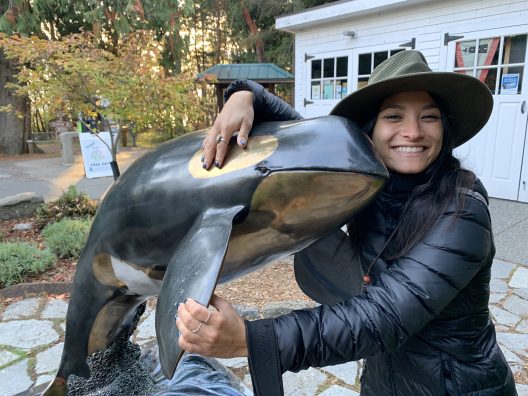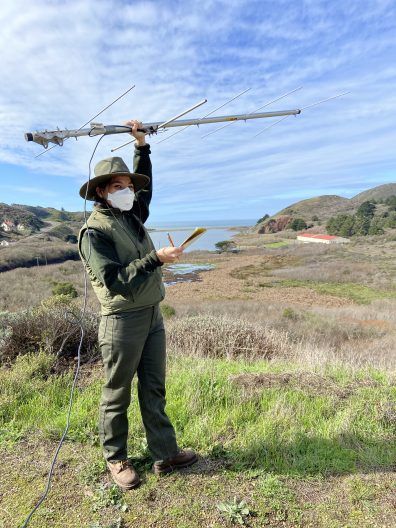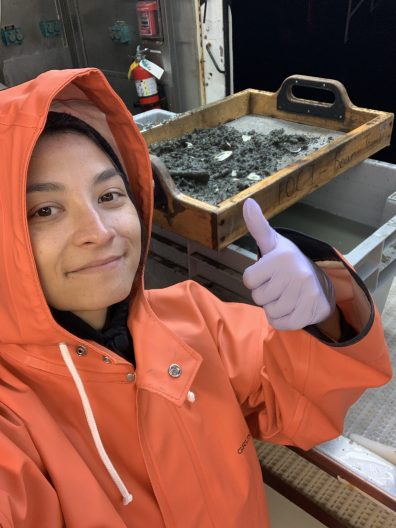Q&A with Gabriela Dunn
 Why did you decide to pursue a Master of Marine Affairs?
Why did you decide to pursue a Master of Marine Affairs?
After 8 years of working in the environmental sphere—working in ecotourism, high school education, environmental consulting, and in the National Park Service—I felt my skills and knowledge had plateaued and I needed to finally pursue a Master’s degree so that I would have greater capacity as a leader to integrate large-scale ecosystem health, community and culture, environmental justice, and climate adaptation.
Why did you decide to attend the UW, and SMEA specifically, for graduate school?
One of the biggest barriers that deterred me from applying to a graduate program, for many years, was the financial prerequisite. The School of Marine and Environmental Affairs (SMEA) helped to break down initial financial barriers and make graduate school feel more accessible through the Top Scholar Fellowship for my first year. Having the opportunity to focus my time towards readjusting to school again, on courses, and research played a major role in my decision to choose UW. Another major deciding factor in my decision to choose UW and SMEA was the ability to take courses from indigenous perspectives in the American Indian Studies Department– something that was not an option in universities I applied to in California but was a priority for me. The interdisciplinary nature of the program also was a deciding factor because it allowed me the power to tailor a course plan that met my specific interests and knowledge gaps. Being able to take both UW and SMEA courses aligned with my goals to gain a more holistic understanding of coastal ecosystem dynamics, policy and management.
 Tell us about your approach to the Courses-only track (what things are you focusing on? how are you choosing courses?)
Tell us about your approach to the Courses-only track (what things are you focusing on? how are you choosing courses?)
When I decide which courses to choose, I am thinking about which skills or knowledge I need to build capacity as a holistic conservation and restoration manager/leader/team member. For example, I needed more technical skills, so I chose GIS, R-coding, and data analysis or visualization courses. Since I have a stronger background in aquatic coastal ecosystem management, I have chosen courses that make my understanding of ecosystem connections and holistic management more complete, like plant-soil interactions and fire ecology courses. I’ve also taken courses that will prepare me to be a better leader and create inclusive, diverse, equitable, and healthy work environments, such as Managing People in Public and Non-profit Agencies in the Evan’s Public Policy School. Thinking about how I can support environmental justice efforts more broadly, I knew I needed to continue learning from underrepresented or historically excluded perspectives, so I sought out courses from the American Indian Studies department and the School of Environmental Forest Sciences.
What has been your favorite class so far? Why?
In no particular order! My favorite classes so far have been Data Exploration (SMEA 550 with Professor Anne Beaudreau) and Indigenous Resistance and Resurgence Movements in the U.S., Canada, and Mexico (AIS 480 with Professor Charlotte Coté). I learned SO much in both of them and appreciate both of the professors’ time, care, and structure put into the course. Data exploration and visualization was such an accessible course for students at different comfort and experience levels working with data. This class balanced the science communication, ethics, and the practical skills needed to be an effective data manager, analyst, and communicator. Indigenous Resistance and Resurgence Movements in the U.S., Canada, and Mexico was an incredibly impactful and powerful course. This class centered indigenous scholars, art, language, food, storytelling, history, and culture to demonstrate the many forms resistance and resurgence movements can take and the power that they hold.
What do you like most about SMEA?
I like the flexibility to take interdisciplinary courses! This is refreshing coming from a very ecology heavy undergrad.
What is your favorite form of marine life and why?
I don’t have a favorite, but I love watching kelp sway in the water. It’s hypnotic, calming, and the color shades blow me away!